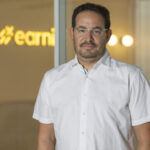![]() The Society of Insurance Research (SIR) will hold their 49th Annual Conference on October 20th – 22nd at the Sheraton Charlotte Hotel in Charlotte, NC and I am thrilled to be attending. The theme for this year’s event is “Reimagining Research to Recognize Emerging Insurance Industry Trends”. Reviewing the agenda, I reached out to a few of the speakers to see what I could learn in advance of their presentations.
The Society of Insurance Research (SIR) will hold their 49th Annual Conference on October 20th – 22nd at the Sheraton Charlotte Hotel in Charlotte, NC and I am thrilled to be attending. The theme for this year’s event is “Reimagining Research to Recognize Emerging Insurance Industry Trends”. Reviewing the agenda, I reached out to a few of the speakers to see what I could learn in advance of their presentations.
 Robert P. Hartwig, Ph.D., CPCU
Robert P. Hartwig, Ph.D., CPCU
Robert is Clinical Associate Professor of Risk Management, Insurance and Finance in the Darla Moore School of Business at the University of South Carolina and Director of the school’s Center for Risk and Uncertainty Management.
Q: Can you provide us a glimpse at your opening remarks for the conference, with a teaser of the top 2 issues most pressing for the P/C insurance industry going forward?
A: The top two issues facing the industry can actually summarized very succinctly in just two words: profitable growth. While much is made of technology, talent, regulation, climate change and countless other issues, it must be recognized that all of these are derivate issues relative to the ultimate and penultimate corporate requisites of profits and growth. The laws of economics in the insurance industry are brutally Darwinian. The environment in which the insurance industry operates changes over time, but old dictum of “eat or be eaten” holds as true today as it did centuries ago.
Q: You note the criticality of research as playing a significant role in managing these challenges. Where would you prioritize research if resources are limited and do you foresee a shift in talent and skills required to meet this new demand?
A: There’s no question that the blend of skills needed to successfully sustain profitable growth is evolving. Increased data proficiency and analytical capability are among those most often discussed. At the same time, insurers, regulators and society need to develop a more holistic understanding of what risk is and how it can and should be managed. The fact of the matter is that on a global scale most risks that can be managed for the benefit of individuals, businesses and society as a whole remain largely unmanaged and unmitigated. Research can help the insurance industry can be part of this solution in ways that enhance individual and social welfare.
On a more immediate and tangible level, insurers need to invest heavily to improve customer connectivity. The typical insurer loses 10 to 15% of its customers each year. This churn is extremely costly when measured in terms of acquisition costs and the relatively poor claims experience of new policyholders (vs. longer-term customers). Technology can help, but research into the behavioral economics, marketing and psychology of insurance products can help.
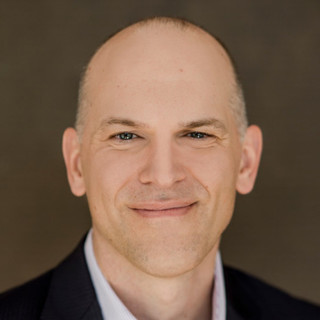 Rob Galbraith
Rob Galbraith
Director of Innovation, AF Group
Rob has over 20 years of experience in the financial services industry in a variety of positions in the fields of P&C insurance, banking and investment markets.
Q: Can you provide us a sneak preview of your presentation, The End of Insurance as we Know it?
A: One of the major challenges is deeply understanding, at a fundamental level, what the main failures or “fatal flaws” are with our current insurance model, which has been around for decades. Outsiders seeking to solve perceived problems with insurance do not have enough of a grasp of the industry to fully comprehend these chronic issues, while professionals in the field have come to accept the status quo.
I categorize problems that are identified with insurance into these 7 fatal flaws.
1. Too expensive
2. Too confusing
3. Too easy to game the system
4. Cash drain
5. Does not cover all causes of loss
6. Does not cover everything
7. Does not cover everyone
Q: Can you share (1) the most costly flaw to ignore (2) the most addressable flaw?
A: I believe the most costly to ignore is that insurance is too confusing. If traditional incumbents are wedded too closely with the status quo, non-traditional competitors will find opportunities to make insurance simpler for consumers and they will switch to companies who have the best customer experiences.
I believe the most addressable is that it is too expensive. The expense ratio for the P&C insurance industry has barely budged over the last decade and hovers in the high 20s. Put another way, while premiums have increased over the past 10 years, the same percentage of premium dollars are being used to cover expenses. Translation: all of the IT spending and other efforts have not made insurance carriers more efficient. Companies need to find ways to speed up the adoption of new technologies, such as AI, to gain a competitive edge and continually push themselves to stay ahead of the pack. With insurtech startups complaining about sales cycles that are 12-24 months long, there is a big advantage to companies who are able to streamline that process down to 12 weeks from 12 months.
Q: To help a carrier’s leadership identify what to focus on, what would you cite as the most transformative technological advancement for an insurer, looking at all of the advancements that could be undertaken.
A: I believe the most transformative technology is artificial intelligence or AI, which comes in a number of flavors. Think about the transition from paper maps to GPS. GPS technology relies on real-time streaming data from mobile phones that everyone carries around in their vehicles. This data is sent wirelessly to the cloud and is processed by algorithms that determine the optimal route to take based on the current traffic conditions, then sends its results back to the phone in a simple yet elegant user interface such as Apple Maps, Google Maps or Waze. The technology is so commonplace today that it is everywhere; we take it for granted. With all manner of sensors from telematics to smart home devices to wearables to images and video, the era of Big Data is upon us. To fully leverage the insights they provide, companies must rely on a host of AI tools and algorithms to compete over the next decade.
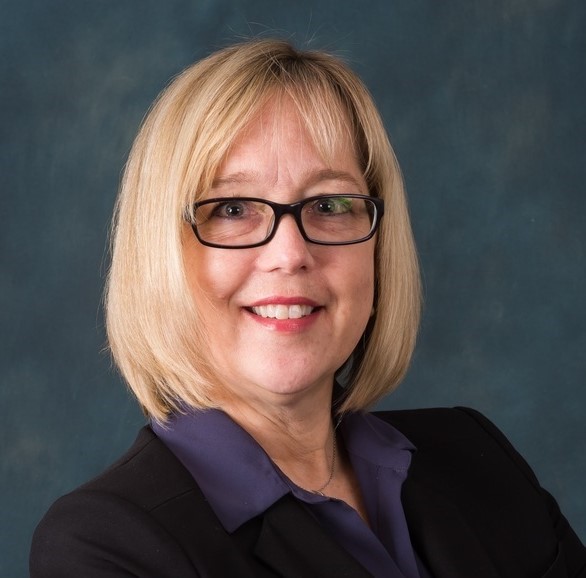 Patrice Nolan
Patrice Nolan
Sr. Vice President Research Services, Competiscan
Patrice has more than 35 years of insurance industry experience as a researcher and consultant.
Q: Can you share any surprising insights from your research study, SIR Research Project: Exploring the Research and Insights Function in the Insurance Industry, that you will be releasing at the conference?
A: This past summer the SIR Research Committee and Zeldis Research Associates conducted a primary research study to explore and understand the research and insights function at insurance carriers and identify practice trends within the industry. We surveyed 184 individuals from 122 different insurance carriers spanning P&C, life, health, annuities, and other types of insurance. Some interesting early findings from the research include:
The good:
- Most respondents feel the work being done in the research/insights function is being used effectively for tactical and strategic decisions.
- Seven in ten feel the research/insights function has a “seat at the table” in terms of being included in discussions about company strategy and decisions.
- More than half feel their function is extremely or very valued by senior management.
The bad:
- Respondents report that their two greatest challenges in the research/insights role are bandwidth and staff limitations and lack of communication of research knowledge across the company.
- Having a tactical vs. strategic focus and budget limitations are also important concerns.
- While half of respondents rate their research/insights function as more strategic (vs. tactical), the vast majority consider this the ideal.
- While less than half say their research/insights function is more centralized (vs. decentralized/siloed), a large majority see this as ideal.
The ugly:
- More than six in ten respondents report that the research work done in their organization is sometimes or often unused or ignored.
- Half say that research work or efforts are sometimes or often duplicated within their organization.
- Few companies have a formal approach for either demonstrating their value or ROI to their organization or for communicating what work is being done.
Probably most surprising is fewer than half of respondents believe that the research/insights function in their organization is very or extremely effective. While most rate their company’s insights function as the same or better than others within the insurance industry, only half rate their function as the same or better than those in other industries.
Q: Do you have any advice to carriers that are looking to improve their use of research in the coming year, prioritizing staff and funding for projects or technology?
A: In order for research to be effective and demonstrate value, my advice to carriers would be to make sure they are communicating across the enterprise the research that is being conducted and making sure relevant results are shared with the appropriate individuals.
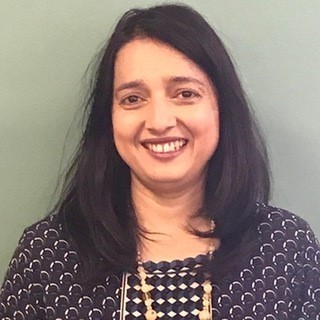 Neelam Paharia
Neelam Paharia
Director- Emerging Markets and competitive intelligence, Product Transformation, Allstate. Neelam has over 20 years of experience within P&C insurance sector with varying roles in Product Innovation, Product Development, Product Management and Process Improvement
Q: What would your advice be to someone interested in getting into the field of research in the P/C insurance industry, as far as skill acquisition and subject matter expertise.
A: My advice to a new professional entering the insurance research field is not come with any preconceived notion about research or insurance. As you prepare for this new role, I want you to bring your insatiable hunger to learn and to focus on refining your communication skills. You will be surprised how much this role is about communicating and influencing multiple stakeholders across the enterprise and building strategic packets for senior leadership. Consider this more like an internal consulting role with access to a lot of good external market insights. You will partner with various subject matter experts (SMEs) in functional areas to understand what insight is relevant and how this impacts us as a company. So, what we need is your inherent critical thinking skills and your ability to connect various non-contiguous data/ insights into a coherent storyline. Of course, we have specialized research areas like consumer research, market research and competitive data & analytics teams that need some foundational skills and aptitude. But, by far, your ability to learn new topics and your collaboration with SMEs to build business cases and recommendations will differentiate you from the rest of your peers.
Q: Do you see this role changing?
A: Yes, I do see this role changing significantly. The industry is going through a transformation/disruption phase. Many new players have entered P&C insurance from technology, OEM and alternative capital space. This has made the insurance research function more dynamic and fast paced. As this is happening in the market, we also see new research capabilities emerging using AI, social media feeds and other platform-based technology that is efficient and more comprehensive. This means insurance research team skills will change, as well. More and more technical expertise and researching for information could be outsourced to niche technology players and our teams will have to be more integrated with various functional areas and strategy stakeholders. Our teams will have to spend a majority of time in making sense of external data/ insights in a contextualized manner. Competitive intelligence teams will focus more on strategic implications of external drivers and building out recommendations that influence company strategy. And all of this will have to be done with aggressive timelines to keep up with the amount of change happening in the industry and within the four walls of incumbent players.
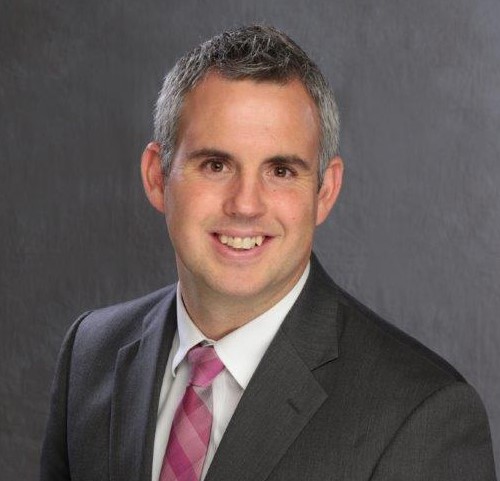 Andy Kearns
Andy Kearns
Innovative Product Director, American Family Insurance Group
Andrew is an innovative Product Director for American Family Insurance Group with responsibility for creating a cutting-edge insurance offering utilizing smart home devices and associated services.
Q: As the industry advances in smart home technology, our audience also is exposed to a fair amount of information about the risks associated with the connected home and the coverages required to protect against potential damages from hacking or malfunction. How do you manage both sides of this as both innovator and risk mitigation expert.
A: Our goal is to provide a “helpful” service to our customers and to be their preferred partner for protecting their home and family. This is a broad statement that can and probably should be as all-encompassing as possible. Connected technology endpoints in a home can be viewed as windows and doors into the lives of our customers. As with a deadbolt on a door or a lock on a window, devices need to be locked down with the same amount of trust and security. That level of security is expensive and time consuming, both of which seem to be enemies of innovation. We value our customers safety and security and the experience we offer in providing peace of mind as our top priority and fit innovation within that context. Innovation is more than being at the bleeding edge of technology, it’s leveraging technology, partners, security and process to deliver unique value to a customer.
In closing, I asked Neelam Paharia why she feels the conference is such a valuable experience for insurance professionals. She responded most enthusiastically.
“SIR connects the insurance research community. Its members have access to various venues to learn from industry leaders and from fellow practitioners on what is changing and how others are adapting to that change. SIR also conducts industry wide studies on topics that are identified as important by its members. Next year is SIR’s 50th anniversary. I look forward to more insurance leaders connecting through SIR to help transform the insurance research function into a new era.”
I’m looking forward to hearing more from each of these presenters at The Society of Insurance Research’s 49th Annual Conference. If you’re planning on attending, I hope we cross paths. If you’re on the fence, check out the full agenda here.




















 What’s Not Changing in 2025: Homeowners Outlook, Re Retentions
What’s Not Changing in 2025: Homeowners Outlook, Re Retentions  California Commissioner Announces Regulation to Enable the Use of Modeling in Rates
California Commissioner Announces Regulation to Enable the Use of Modeling in Rates  AIG Leads Launch of Reinsurance Syndicate at Lloyd’s
AIG Leads Launch of Reinsurance Syndicate at Lloyd’s  Auto Insurer Files $450M Fraud RICO Case in NY
Auto Insurer Files $450M Fraud RICO Case in NY 



